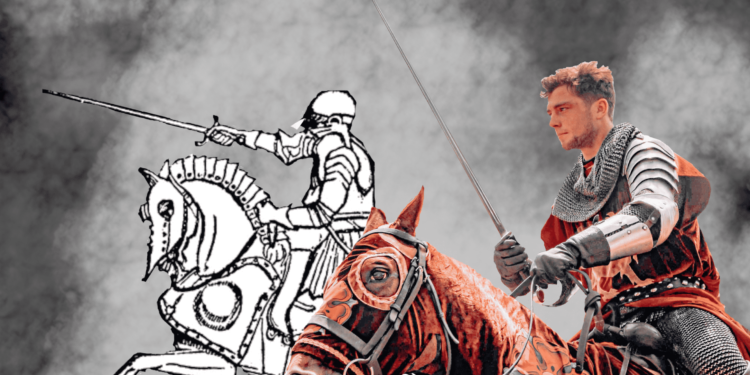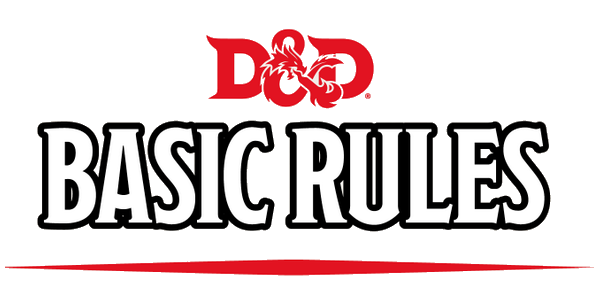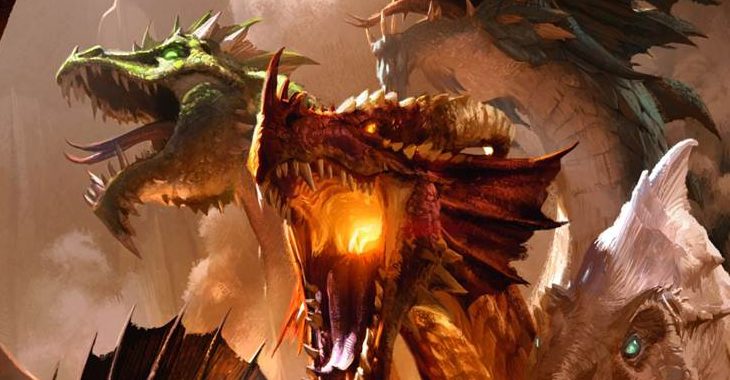Five Aspects of an Authentic D&D Character

In tabletop roleplaying games like Dungeons & Dragons, players create their own characters and Dungeon Masters create dozens of NPCs to populate the world. That can be a daunting task, especially for a DM. Too little detail or personality and a character falls flat. Too much and you become overwhelmed or create a caricature.
How can you create an authentic character that you feel comfortable roleplaying? Try breaking it down into these five aspects: appearance, background, relationships, goals, and voice. It doesn’t matter which one you start with or what order you consider them, but it’s often easiest to start from the surface (appearance) and work your way toward what makes them a unique individual (voice).
Appearance
Dungeons & Dragons has a huge variety of possible character options. The Player’s Handbook includes descriptions of the typical appearances for all the core races, and other sources expand upon that. Of course, just like in real life, typical does not mean only. But it’s a good place to start. It allows a short cut for our imaginations. For example, if I tell you a character is a dwarf, you can assume they are shorter and broader than a human character. The same is true with a character’s biological sex (although that might not be discernable at first glance) and a character’s age.
The next detail to consider is their coloring. Does the character have a realistic human skin tone or is it a shade of green, red, blue, gray, or colored scales? Do they have hair? What color and style? Does it match our typical expectation with their skin tone?
Keep in mind unintentional biases when deciding on a character’s appearance. Don’t fall for the trap of making all the characters the same coloring as you (or, worse, all the “bad” characters not like you). Be very careful and deliberate with your word choices. A fantastic resource I’ve used is a blog called Writing With Color. You could also avoid potentially problematic language by instead comparing the character to an actor or actors. (Dwayne Johnson with Benedict Cumberbatch’s cheekbones as a Wood Elf).
Finally, consider what they are wearing. This ties directly to their background. A farmer, a fur trader, a merchant, a nobleman, and an adventurer all have very different outfits. Do they carry weapons or wear armor? Do they have some other item on their person – a mask, a fancy satchel, a colored scarf – that makes them stand out from the crowd?
All these details scratch the surface on what you could describe. So, what should you describe? That depends. Is it a player character or major NPC? In those cases, you’ll probably want to take the time to create a more complex mental image. But for minor NPCs, decide their age, race, gender, and one or two other distinguishing features. For example: middle-aged halfling woman, fair skin with freckles, braided red hair and a blue apron.
Background
During character creation in Dungeons & Dragons, you choose a Background which provides additional proficiencies, languages, equipment, and features (p. 125 PHB). Use that to develop a character’s history. An Entertainer and a Hermit probably had very different life experiences.
Consider what environments the character has lived in and how that would influence every other aspect. Were they classically educated, or did they pick up their knowledge on the streets? What was their wealth level growing up and what has it been recently? Do they have a job or does their family have a specific trade?
A person who grew up on a farm may have rough, suntanned skin, calluses on their hands, and a no-nonsense approach to life. A wealthy noble may carry themselves with rigid posture and dress in fine clothes. Maybe the Soldier has an old wound that causes her to limp. The character might have rebelled, rejected, or were excluded from the background they grew up in.
You don’t have to write a long backstory in order to know a character well enough to roleplay them. Decide where they grew up and what it was like (this includes their social standing, wealth level, and the education they received), if/where they have traveled, and if they have a trade. This is also a good time to choose a name for the character.
Let’s use the halfling woman as an example. We’ll name her Eida Porrigepot. Eida grew up in a city but moved to a frontier town as an adult to start her own farm, was never wealthy, but always had what she needed, and was taught reading, writing, arithmetic, and a little history.
Relationships
Relationships have a huge influence, for good or ill, on a person. The Bond section of each Background can provide inspiration for this aspect.
Family is the first relationships we form, so start there. When making a player character, it’s tempting to create an only child with dead parents just so you don’t have to worry about them, but I challenge you to resist that urge. Family relationships are some of the most complicated we experience, so lean into that. That can be a gold mine for drama and character growth, two things that make a narrative interesting.
After the family, consider the character’s friends. You don’t need to know who precisely the friends are unless you expect them to become part of the narrative. But it is important to know the character’s social circle. What if they seem very popular, but they don’t consider anyone their friend? What if they are bullied by most people, but have a couple close friends that support them? The friends don’t have to be humanoids. Perhaps their closest friend is their pet weasel.
Next, decide if the character has had any romantic relationships. Are they still in a relationship? If it ended, were they glad, devastated, bitter, amiable, or something else?
Mentors are another relationship to consider. This is especially relevant for player characters because becoming an adventurer is not an average occupation. Did someone train them to be their chosen class?
Finally, determine how the character is connected to other known groups. By this I mean political powers, factions, or other organizations. For NPCs, this includes their relationship with the PCs. Depending on your game’s level of political intrigue, this question can quickly become complicated. For DMs creating NPCs, I recommend using the “Starting Attitude” options in the Dungeon Master’s Guide (p. 244) to have a simple way to capture a character’s feelings and interactions with a specific group.
Eida Porrigepot grew up in a big, loving family, but felt smothered by it. As soon as she could, she moved out to live on her own, although she does keep in touch. She had a summer fling with a traveling merchant, and still loves him, but doesn’t know how to find him again. She’s working class, and well-liked by those around her, so she has many friends. She’s not connected with any major powers, but has a friendly disposition toward travelers, and is indifferent toward the Duke’s rule.
Goals
What drives a character? Use the Ideals section from the character Backgrounds for inspiration if you aren’t sure where to start.
Every character will have goals or desires. Sometimes those are straightforward, but an authentic character will have multiple goals of varying complexity. Perhaps the character would claim their main drive is to “get rich”. Take that a step further. Realizing the deeper meaning behind a surface goal is what creates a three-dimensional character. Maybe the reason they want to get rich is to become completely self-reliant because they hate feeling weak. Or because they want to make their emotionally distant father proud. Or because they covet a carefree, luxurious lifestyle.
Consider what the character wants in the short term as well as their long-term goals. A sorcerer may have a long-term goal to see the world, but their short-term goal is to better control their magic.
Attempt to summarize each goal in a single sentence or even bullet points. You can then use that as a guide in your roleplaying. If you know that the character is driven to prove themselves, then maybe they choose to take potentially stupid risks.
Players, tell your DM what your character’s goals are. If they don’t know, then they can’t help your character achieve them. DMs, check in from time to time with your players to see what their immediate and long-term goals are, and if they have changed since you last asked.
Eida has always desired independence, so that has driven her to have her own farmstead. She likes the freedom it brings and enjoys seeing the tangible fruits of her labor. Long term, she’d like to expand the farm enough to have hirelings and be able to delegate the less enjoyable tasks. A secondary goal, one she would never say aloud, is that her success will lead to her traveling merchant lover finding her again.
Voice
In fiction writing, a character with a strong “voice” feels authentic to the reader. This is where you put together the pieces you’ve created from the other aspects to form the core of the character’s personality.
Consider how their appearance, background, and relationships would have influenced them. Are they good looking? Maybe they are used to being liked and so are surprised when people are unkind. Does their appearance fit into their culture’s expectations? If not, that says something about their personality. They are either rebellious, oblivious, or an outcast. Are they proud of their cultural heritage? Maybe they are ashamed of their family’s poverty, or arrogance, or corruption. If they had siblings where were they in the birth order? What were their parent’s expectations?
Most NPCs are not given a class but thinking about what class they could fit into is another short cut to understanding that character. Just like we have default expectations for certain races, the same is true with the classes. A cleric might be kind and insightful. A wizard is probably bookish. A fighter could be tough and disciplined.
You can gain inspiration from the Personality Traits and Flaws in the Backgrounds. The Dungeon Master’s Guide also has ideas to use in the “Creating a Nonplayer Character” section (starting on p. 89). Do an internet search for a list of personality traits, and then pick 3 that you feel fit the character. It could also be a fun exercise to take a personality quiz as that character.
Be sure to include negative traits. A character without flaws is unrealistic and uninteresting. Create opportunities for growth because that is what makes a good narrative and a believable character.
Think about the character’s ability scores. With a high strength and a low dexterity, they could be clumsy and prone to accidentally breaking things. With a high wisdom and low charisma, they could be insightful but give tedious speeches. Decide what other physical mannerisms they have. Some examples are fidgeting, combing their beard, squinting, using a lot of hand gestures, or smiling wider when they are nervous.
Decide on their actual voice and speech pattern. Even if you don’t engage in a voice acting type of roleplay, you can describe how they speak. Is there a word or phrase they frequently use? They could use colorful oaths and exclamations, flowery speech, or incorrect phrasing. Giving a character an accent is great, but there are other ways to distinguish their voice. They could speak loudly or only whisper. They could slur their words or overly enunciate. You can pitch your voice higher or lower when speaking in character to differentiate them from yourself.
It’s okay to exaggerate a mannerism to create a memorable character. Just be sure to ground the character in other ways. In one of my games, an NPC has a very brash, loud voice and personality, but he has shown that he cares deeply about the people around him.
Our halfling, Eida, is outgoing, practical, and optimistic. She doesn’t tolerate fools but, being a middle child of five siblings, has a mischievous side – especially when she’s had something to drink. Because she received a city education, she tends to think of herself as more cultured and knowledgeable than those around her. However, she downplays her city accent so she can fit in with her rural community.
Conclusion
Creating an authentic character takes time, just like getting to know someone in real life. You don’t have to have it figured out on day one. Leave room to discover new facets of the character through roleplaying.
In a truly authentic character, each aspect influences and is influenced by all the others. People are complicated, which means believable characters are complicated too. Use these five aspects to turn a sketch of a character into a realistic portrait and beyond.



